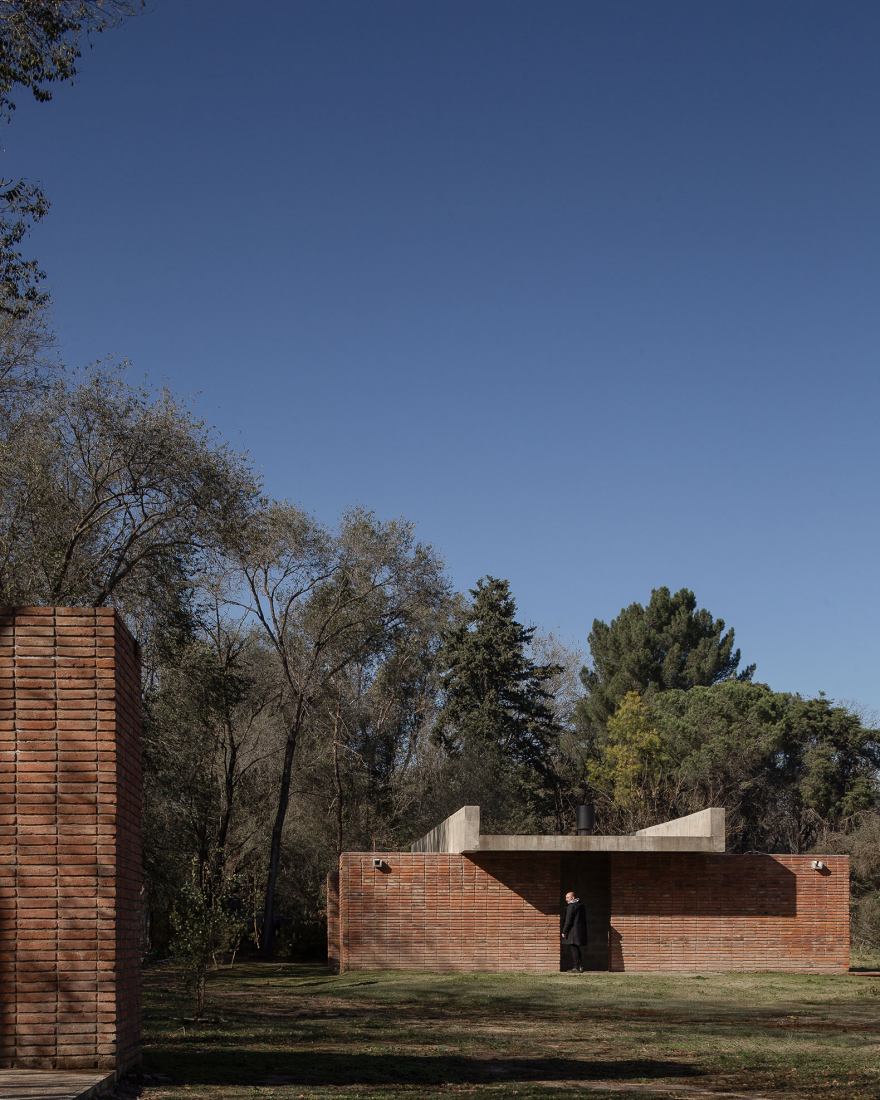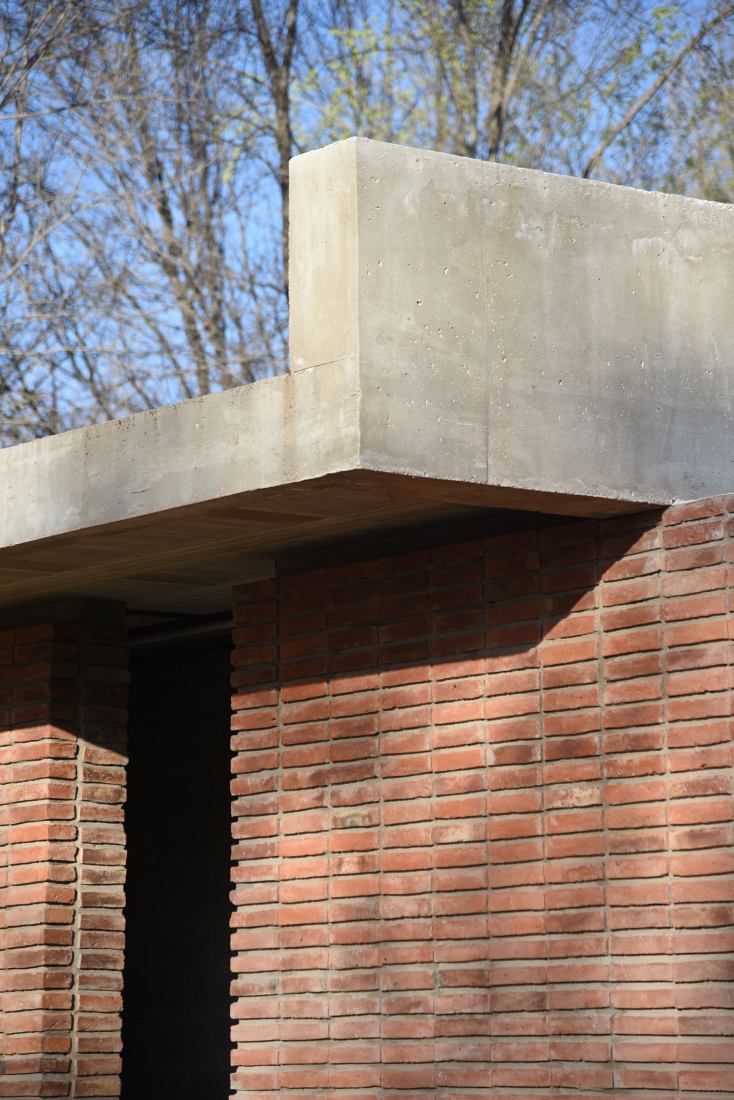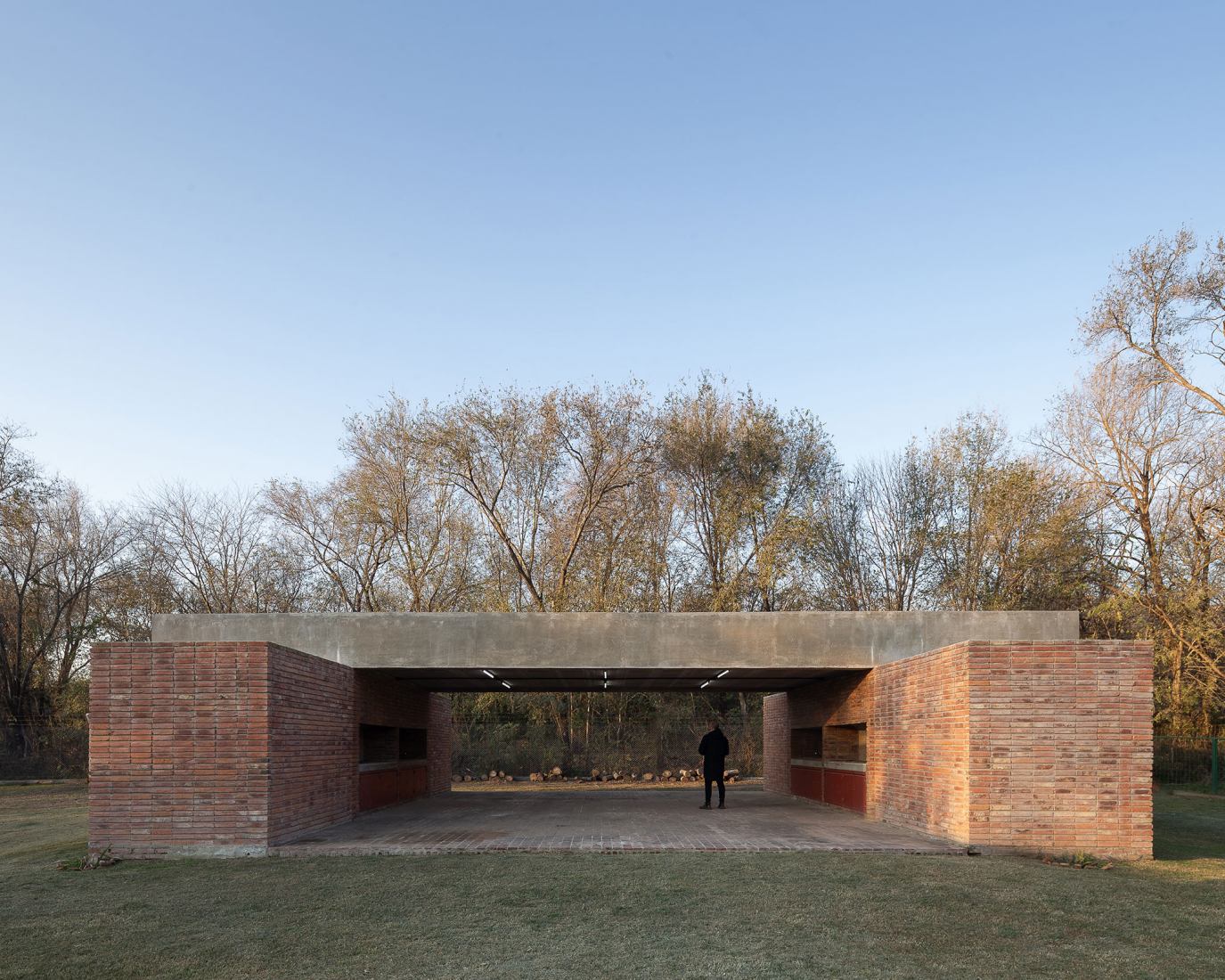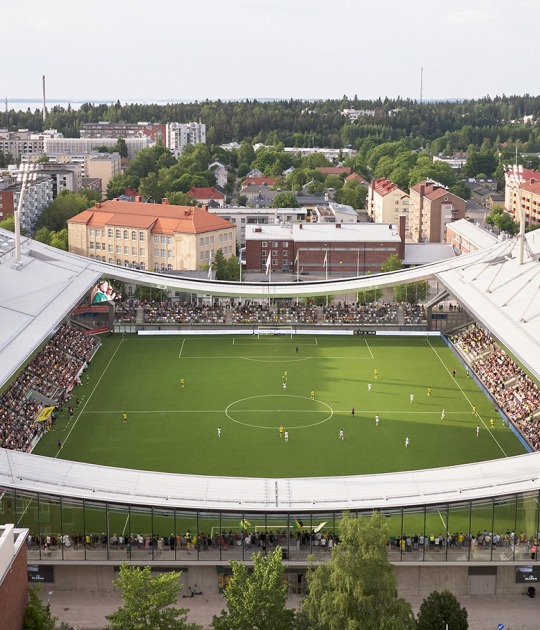The roof, with exposed concrete joists, functions as a large gutter capable of returning rainwater to the ground, while the trees, as the background of this space intended for large meetings, allow it to integrate with the natural ecosystem.
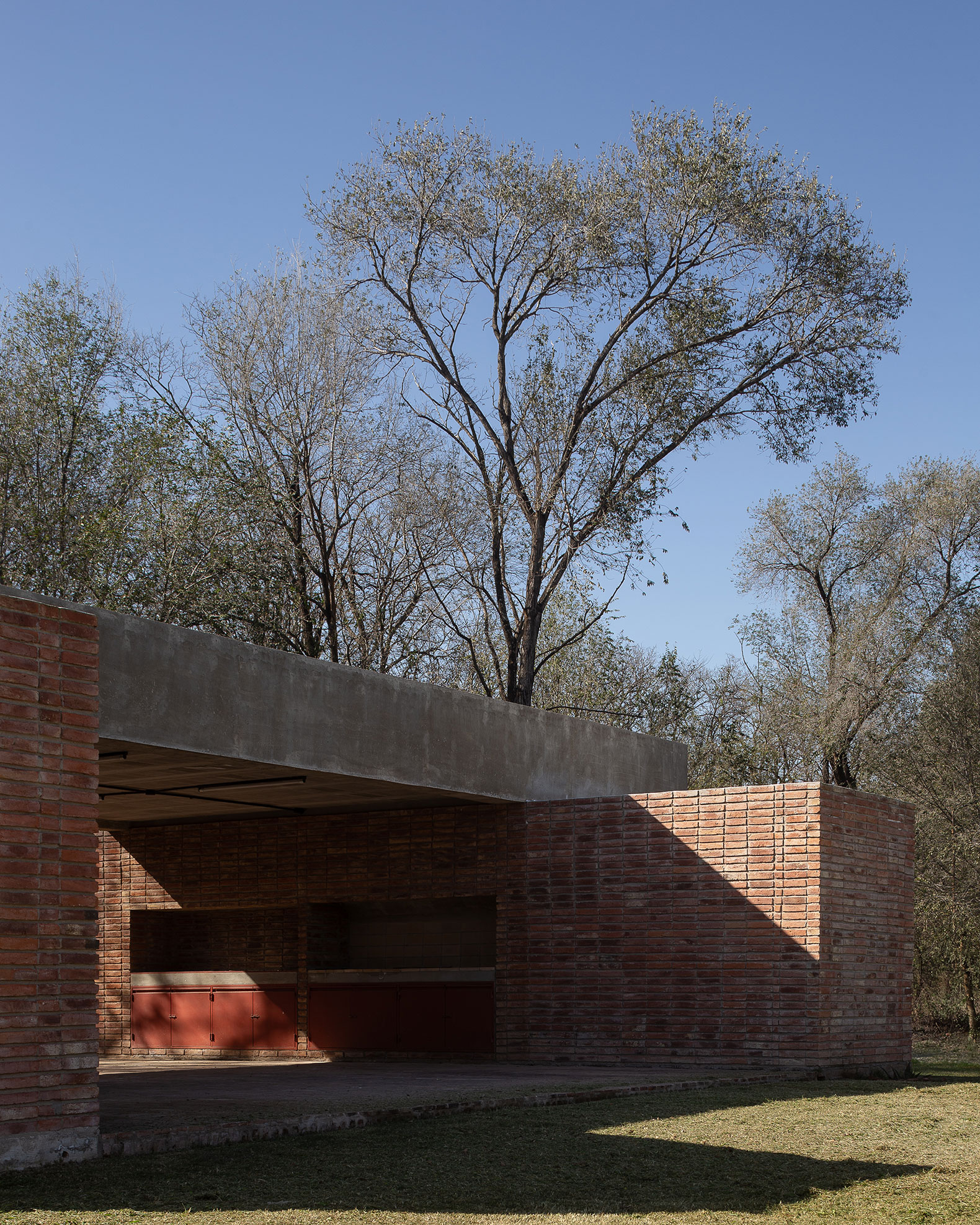
Quincho Bialet by Balsa.Crosetto.Piazzi + Diego Avendaño. Photograph by Marcos Guiponi.
Project description by Balsa.Crosetto.Piazzi
Quincho Bialet is a space created to host the barbecue ritual.
The work is located in the small town of Bialet Massé, in a place located between Lake San Roque and the Sierras Chicas.
The project is conceived mainly as a roof. This rests on two walls whose thickness houses the services - toilets and storage rooms - that serve as the main space of the roast ritual. This central space is the main objective of the project: a space of hierarchy, central to the project, liberated and deprogrammed. It is a kind of shelter for collective gatherings, for preparing meals with fire, and for sharing with others. There is no equipment; or enclosures. Just some grills, conceived as holes in the walls.
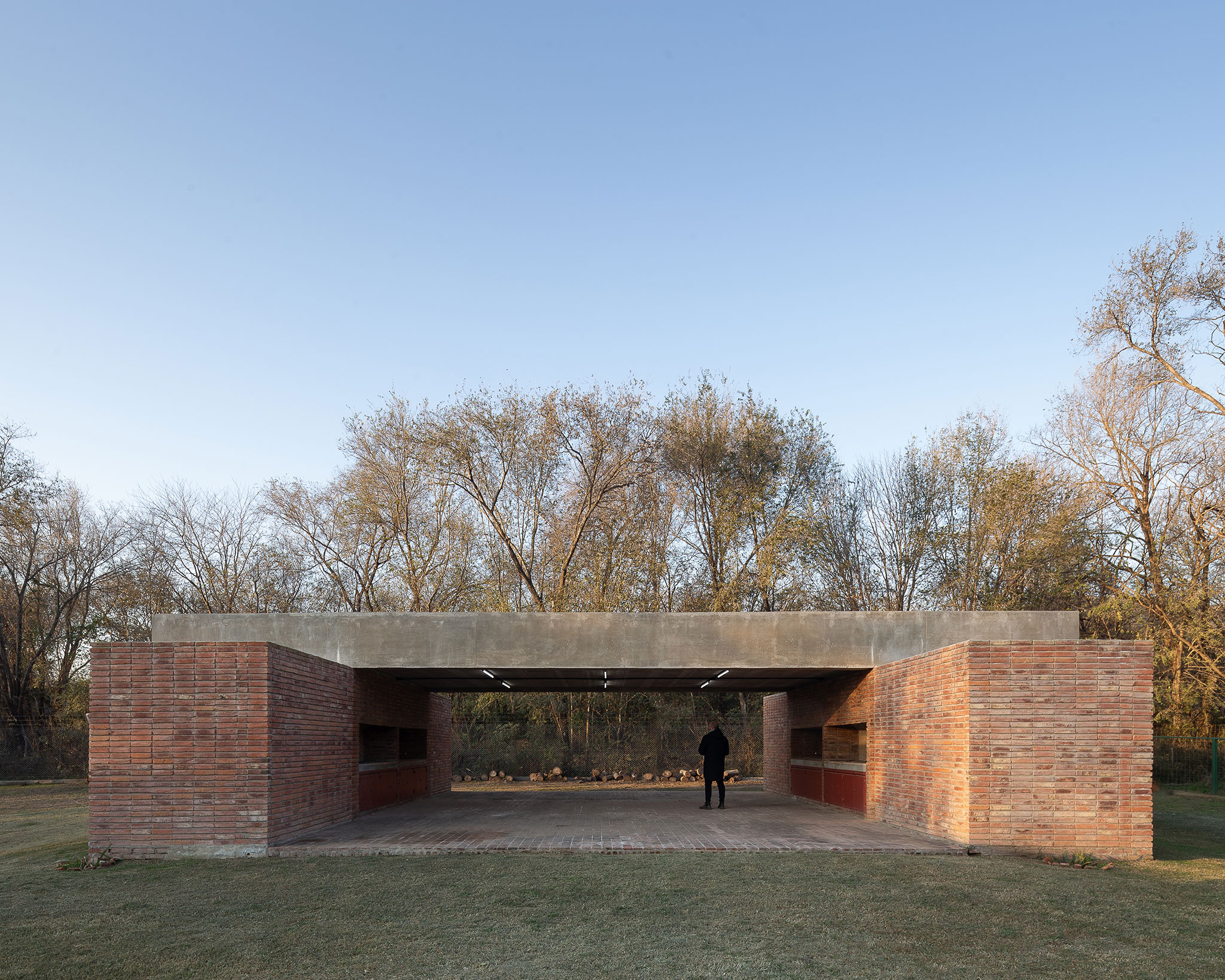
Quincho Bialet by Balsa.Crosetto.Piazzi + Diego Avendaño. Photograph by Marcos Guiponi.
The brick of the walls and the floor, as well as the prefabricated concrete joists used in the roof, are common materials in local construction, popular, low cost, and zero maintenance. Building with them in a place like Bialet Masse is for us a common sense decision since it is about operating with what is available, both in material terms and about the “know-how” of the bricklayers who build the work. In other words, the Quincho seeks to use hyper-contextual techniques and materials, in a way that brings the project closer to dialogues and more abstract forms.
The interior of the roof is left “unfinished”, leaving the joist structure exposed. The slab functions as a large concrete gutter that receives and transports rainwater back to the ground. The entire electrical installation is exterior, thus avoiding penetrating the brick. The floor and walls are made with hand-made bricks, coming from a cutting site near the work.
The trees are the background of this great space that is the Quincho. The project has the aura of a refuge; a meeting space with and within the nature of Monte de Córdoba.

